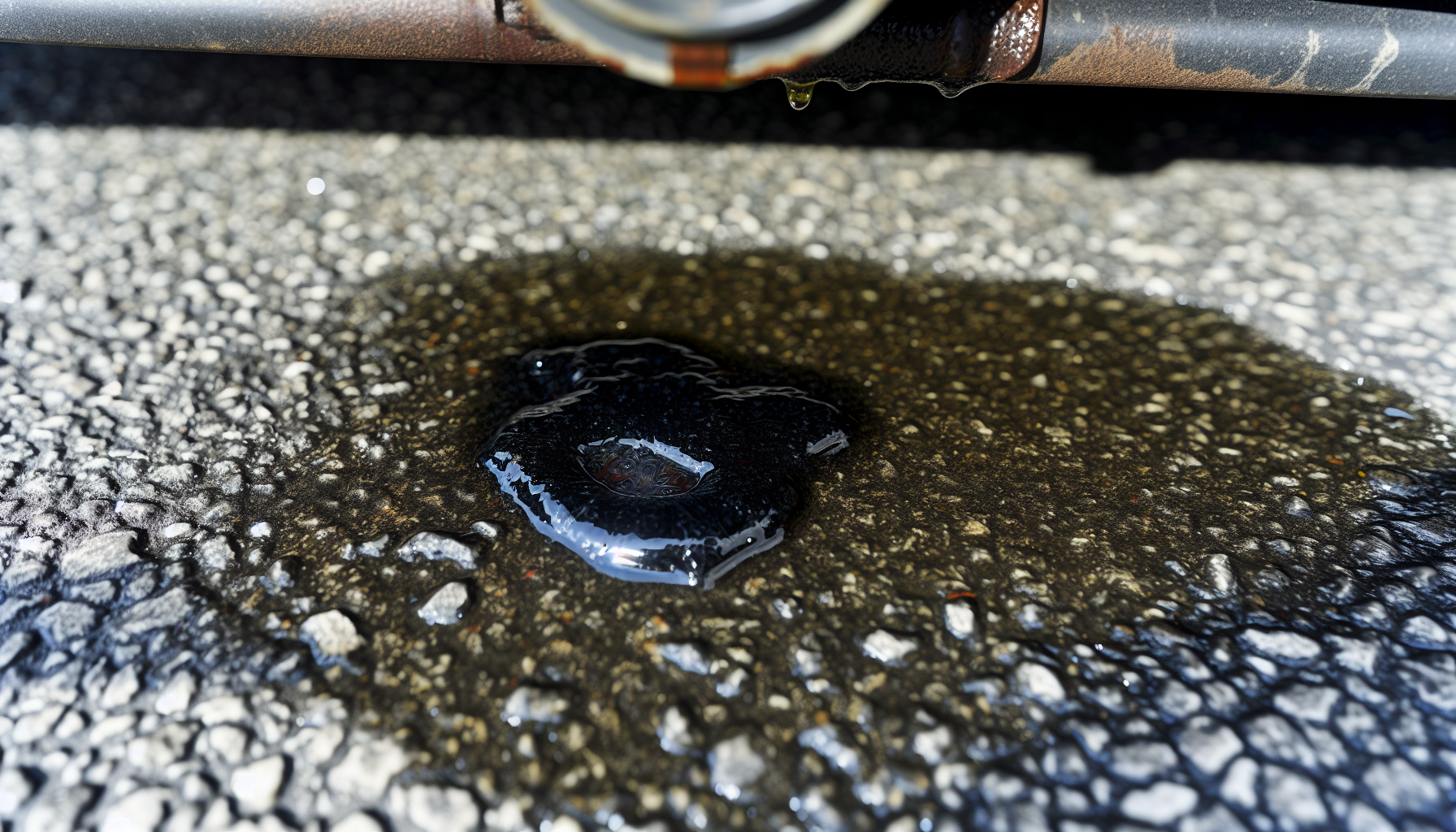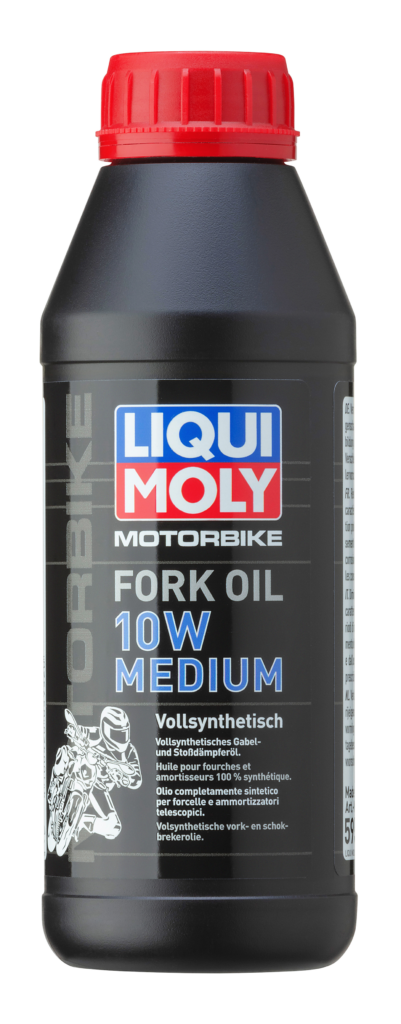Bumpy rides aren’t just uncomfortable, they’re a sign your vehicle might need better shock absorber oil. Cutting through the complexity, our guide simplifies the science of shock absorber oil and how it affects your daily driving experience. Learn how to select the right oil, recognize signs of wear, and maintain your system for consistent, smooth performance.
Key Takeaways
Shock absorber oil is essential for vehicle suspension system performance, contributing to smoother rides by controlling suspension movement and adapting quickly to varying road conditions.
Maintaining and servicing shock absorbers is crucial, involving regular inspections for leaks, timely part replacements, and choosing the correct oil viscosity based on specific vehicle needs and driving conditions.
Professional mechanics offer expertise in shock absorber oil change and maintenance with specialized tools and diagnostics, potentially preventing costly repairs and ensuring safety compared to DIY approaches.
Understanding Shock Absorber Oil

When discussing vehicle performance, the significance of shock absorber oil often goes unnoticed. Let’s highlight this key component. Shock absorber oil, also known as shock oil, suspension fluid, or shock absorber fluid, is a vital player in your vehicle’s suspension system. It is used to convert the kinetic energy from the spring’s movement into thermal energy, which is then dissipated in the hydraulic fluid. The oil in shock absorbers is contained within an oil-filled cylinder through which a piston moves, controlling the movement of the suspension by forcing fluid through orifices in the piston head.
Shock absorbers are velocity-sensitive, providing more resistance the faster the springs are moving. This is facilitated by the shock absorber oil, which enables the shocks to adjust to different speeds and varying road conditions quickly. Thus, the right shock oil can significantly impact your vehicle’s performance, making your rides smoother and more enjoyable.
The Role of Shock Absorber Oil
Shock absorber oil is more than just a fluid that fills the shocks. This oil is responsible for providing predictable damping in a vehicle’s suspension system. Wondering what that means? In simple terms, the shock oil helps to maintain continuous tire contact with the road by absorbing energy from road irregularities through the dampening of the vehicle’s springs. The result? A smoother, safer, and more comfortable ride.
The thickness, or viscosity, of the shock absorber oil plays a significant role in how well the suspension system operates. Thinner shock absorber oil can enhance the suspension’s sensitivity to small bumps, thereby allowing quicker reactivity to minor surface variations. This quick reactivity can dramatically enhance your vehicle’s performance, particularly on bumpy or uneven terrain.
Viscosity and Its Effects on Performance
Viscosity, or the thickness of the oil, is a critical factor that determines the oil’s ability to flow through suspension components. This directly influences the damping characteristics and resistance provided by shock absorbers. For instance, in suspensions with tapered needle bleed circuits, fluid density is critical, whereas friction needles respond more to oil viscosity and less to density changes.
Kinematic viscosity plays a crucial role in suspension tuning, as it represents the actual oil viscosity relative to oil density and affects damping force. Identical kinematic viscosity values can lead to different damping forces in shock absorbers due to brand-specific densities of the oils. Higher viscosity oils increase friction losses in the suspension, elevating the damping force, which is further amplified by high oil densities. So, depending on the specific requirements of your vehicle and riding conditions, you might need to consider thicker or thinner shock absorber oils.
Identifying Signs of Leaking Fluid

Understanding the important role of shock absorber oil compels us to be vigilant about any issues that could hinder its performance. One such issue is fluid leakage. A little fluid seepage or ‘weepage’ from your shock absorbers is not necessarily an indication of product failure. However, if there is wetness along most of the unit or dripping fluid, it’s a clear sign of leakage that requires immediate attention.
Visible leaking fluid on unit 3 or 4 of the shock absorber is a clear sign of leakage that requires immediate attention. Regularly inspecting shocks and the suspension system can reveal the presence of oil, indicating worn-out shock absorbers. Upon confirmation of leakage, repairing or replacing shock absorbers is necessary, and replacing them in pairs on the same axle is recommended for balanced performance. This not only ensures optimal vehicle performance but also prevents potential accidents due to system failure.
Common Causes of Leakage
Understanding the causes of fluid leak can help prevent it. Damaged top seals in shock absorbers, which are crucial for preventing fluid leakage, can deteriorate over time and allow oil to escape. Similarly, bushings at the ends of the shock absorbers made from rubber may crack, destabilizing the shocks and often leading to fluid leakage.
Wear and tear on shock absorber seals over time and distance can result in oil leakage, diminishing the shock absorber’s effectiveness in damping car body motions. Excessive loads on the suspension, often from impacts like deep potholes, directly stress the shock absorbers and can cause instant leakage through weakened gaskets and seals. By being aware of these causes, you can take preventative measures to ensure your vehicle’s shock absorbers last longer and perform better.
When to Replace Shock Absorber Oil
Being aware of when to replace shock absorber oil can help you avoid possible vehicle performance issues. Shock absorber oil should be replaced in the event of system leakage to ensure proper function. A common recommendation for changing shock absorber oil is between 20 to 30 hours of riding to maintain optimal performance. However, for less intense riders, such as those in B/C classes or veterans, shock absorber oil might be changed every 30-40 hours or at least once a season.
Remember, these are general recommendations; the specific requirements may vary based on your vehicle type, riding intensity, and environmental conditions. Therefore, always refer to your vehicle’s manual or consult a professional for personalized advice.
Choosing the Right Shock Absorber Oil for Your Vehicle

Selecting the appropriate shock absorber oil for your vehicle is a key step towards maintaining peak vehicle performance. The choices might seem overwhelming initially, with various brands and types of oils available. But don’t worry, we’ve got you covered. Here are some high-quality shock absorber oils to choose from:
KYB
Monroe
Fox Racing
Gabriel
Whether you’re an off-road adventurer or a city commuter, brands like:
Bilstein
KONI
Skyjacker
Rancho
have got you covered, offering shock absorbers suitable for both on and off-road driving. If you’re looking for cost-effective alternatives without compromising quality, DriveTech America (DTA) and Belltech offer excellent options. Each brand offers unique features and benefits, so consider your vehicle’s specific requirements and your driving habits to make an informed decision.
Popular Brands and Models
When it comes to popular brands and models, Fox, Maxima, and Bilstein stand out, offering top-rated shock absorber fluids available at Behrent’s Performance warehouse. Monroe shock absorbers, with their long warranty and reputation for quality aftermarket solutions, are another commendable choice.
If you’re looking for a versatile option, KONI shock absorbers might be the right fit. They offer high tolerance and are used in a variety of vehicles, including cars, trucks, and even railways. For the off-road enthusiasts, Skyjacker shock absorbers, known for their ability to handle rough terrain, are an excellent choice. Remember, choosing the right brand and model can significantly contribute to your vehicle’s performance and longevity.
Thicker vs Thinner Oils
Choosing between thicker and thinner oils can be a tricky decision. The choice largely depends on your specific needs and the conditions in which you’ll be driving your vehicle. The viscosity of shock absorber oils can drop significantly with temperature increases, impacting the damping performance at slow speeds. High Viscosity Index (VI) oils experience fewer viscosity changes with rising temperatures, maintaining more consistent performance across a range of operating conditions.
Thinner oils can accelerate the wear inside the damper, potentially leading to more frequent maintenance or replacement needs. However, thinner oils allow for quicker shock response, ideal for smooth surfaces and lower temperatures, making the suspension feel more responsive to lighter riders. On the other hand, thicker oils are preferable for off-road conditions, jumps, and warmer climates, as they maintain consistent damping under stress and temperature. So, consider your vehicle’s requirements, your driving habits, and the environmental conditions before deciding on the oil viscosity.
Proper Maintenance and Service of Shock Absorbers

Maintaining the suspension system regularly is a straightforward and cost-effective practice that enhances its lifespan. It’s not just about choosing the right shock absorber oil; maintaining your vehicle’s shock absorbers effectively can significantly enhance your vehicle’s performance while ensuring safety.
To prevent reduced effectiveness and noise in the suspension system, it is crucial to ensure that shock absorber mounts and bushings are in good condition. Proper maintenance includes routine checks for leaks, timely replacement of worn-out components, and maintaining the optimal fluid level in your shock absorbers.
Routine Inspection and Replacement
Frequent inspection and replacement of your vehicle’s shock absorbers are essential for maintaining peak performance. Here are some guidelines to follow:
Shock absorbers and struts should be inspected approximately every 12,500 miles.
It is recommended to have a professional inspect the shock absorbers every time the vehicle undergoes routine service.
Replacement of shocks and struts is generally recommended around every 50,000 miles.
The frequency required for shock absorber inspection and replacement may vary based on the environment in which the vehicle is driven, with harsh conditions necessitating more frequent checks. Vehicle owners should consult the owner’s manual for specific service recommendations, which may suggest annual service especially if the vehicle is not used frequently. Regular maintenance by a professional can help identify potential issues with shock absorbers before they escalate, potentially preventing costly repairs in the future.
Tips for Extending the Life of Your Shock Absorbers
Prolonging the lifespan of your shock absorbers relies not only on maintenance but also on your driving habits. Here are some tips to help reduce stress on the shock absorbers and suspension system:
Carefully navigate bumpy roads
Avoid potholes
Moderate speed around curves
Prevent overloading of the vehicle
Following these tips can help extend the lifespan of your shock absorbers and reduce wear.
Maintaining regular wheel alignment checks, typically recommended every 30,000 miles or two years, supports overall suspension system health. Here are some tips to keep in mind:
Regularly check tire pressure and tread condition, as tires impact the suspension and shock absorbers significantly.
Regularly lubricate the vehicle’s suspension system components to reduce wear and tear on the shock absorbers.
Regularly clean shock absorbers to remove dirt and grime, which is essential in preventing corrosion and prolonging their effective service life.
Use the vehicle manufacturer’s recommended parts, or high-quality aftermarket alternatives, to contribute to the compatibility and longevity of shock absorbers.
DIY vs Professional Shock Absorber Oil Change

Deciding between a DIY or professional shock absorber oil change primarily hinges on your technical skill, tool availability, and familiarity with vehicle maintenance. Changing shock absorber oil is a task that can be complex and may not be suitable for all car owners, partly due to the potential risks involved in working with vehicle suspension systems.
DIY vehicle maintenance, such as changing shock absorber oil, requires a certain level of technical skill and understanding of the vehicle’s suspension system. On the other hand, professional mechanics have the expertise and access to specialized tools and diagnostic equipment that can ensure the shock absorber oil change is done correctly, with a lower risk of damage to the vehicle or the suspension system.
Therefore, consider your comfort level, the complexity of the task, and the potential risks before deciding on a DIY or professional shock absorber oil change.
Tools and Knowledge Required for a DIY Oil Change
As discussed, a DIY oil change requires a certain level of technical skill. Additionally, you would need a range of tools including a jack and jack stands, an oil catch pan, and potentially specialty tools depending on the design of the vehicle. It’s essential to have a clear understanding of the vehicle’s suspension system, as incorrect handling can lead to damage and potential safety risks.
While a DIY oil change could save on labor costs, keep in mind that any mistakes could lead to more expensive repairs down the line. Therefore, if you’re not entirely comfortable or don’t have the necessary tools, a professional oil change might be a safer and more efficient option.
Benefits of Professional Service
Opting for professional service for your shock absorber oil change comes with several benefits. Professional mechanics have the expertise and access to specialized tools and diagnostic equipment that can ensure the job is done correctly, with a lower risk of damage to the vehicle or the suspension system. They are trained to spot potential issues that might go unnoticed in a DIY attempt, preventing possible future complications.
Moreover, professional services often come with warranties, ensuring that any issues arising from the service will be taken care of free of charge. So while professional service might come at a higher upfront cost, it ensures peace of mind and could potentially save you from expensive repairs in the future.
Summary
In conclusion, shock absorber oil plays a pivotal role in your vehicle’s performance, affecting everything from smooth handling to safety. Understanding its function, identifying signs of leakage, and knowing when to replace it are essential for maintaining your vehicle’s optimal performance. Whether you’re going the DIY route or opting for professional service, the choice of shock oil, routine inspections, and timely replacements are crucial. Remember, your vehicle is only as good as its maintenance, and shock absorbers are a vital component of that upkeep.
Frequently Asked Questions
What type of oil is used in shock absorbers?
Shock absorbers use hydraulic oil, such as EASTTO SHOCK ABSORBER OIL 12, 18, or a combination of lubricating base oil and silicone oil. These types of oils are commonly used in automotive and industrial shock absorber applications.
Can you refill oil in shock absorber?
Yes, you can refill oil in a shock absorber by adding oil and removing any air if necessary. Make sure to follow the proper steps for refilling and bleeding the shock absorber.
What is the role of shock absorber oil in a vehicle’s performance?
Shock absorber oil is crucial for providing predictable damping in the suspension, maintaining continuous tire contact with the road, and enhancing the suspension’s sensitivity to small bumps, all of which are essential for a vehicle’s performance.
How can I identify a leak in my shock absorbers?
If you notice wetness along most of the shock absorber unit or dripping fluid, it is a clear sign of a leak that needs immediate attention. Addressing this issue promptly is crucial for the proper functioning of the shock absorbers.
How often should I replace my shock absorber oil?
It’s recommended to change shock absorber oil every 20-30 hours of riding for optimal performance, or every 30-40 hours for less intense riders, or at least once a season.